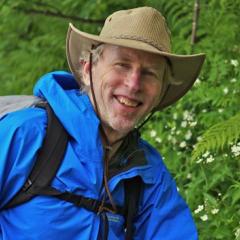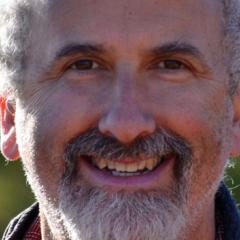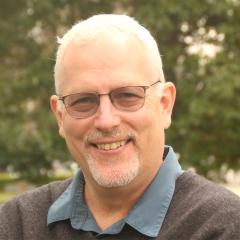California Retreat & Study Tour Spring 2013: Sacramento-San Joaquin River Delta
The “Delta” covers 738,000 acres in a maze of islands, rivers and sloughs at the confluence of the Sacramento and San Joaquin Rivers, and several tributaries. The 58 islands are framed by 1,000 miles of rivers and sloughs and the Delta receives its water from over 40% of the state’s land area. As noted in the newly released Bay-Delta Conservation Plan, produced by the Delta Stewardship Council, the Delta is also a flashpoint for conflict in water use. The Plan mandates that future management actions be enforceable and represent the “coequal goals” of restoring and enhancing the Delta ecosystem while providing for a more reliable water supply in California. [download a copy of the Delta Plan Fact Sheet, PDF, less than 1 MB]
The 2013 California spring Fellows retreat, held March 23-25, 2013, was an opportunity for Switzer Fellows and colleagues to examine these critical environmental issues from an interdisciplinary perspective and to share expertise and creative exchange. We were fortunate to have the leadership of several Switzer Fellows and colleagues who are extremely knowledgeable about the region to host an insider’s tour of this special and surprisingly remote place, with a focus on the North Delta region.
We based our exploration at the “historic” Ryde Hotel and our tour of the Delta began Friday evening with remarks from Switzer Fellow (1995) Tim Ramirez, Manager of the San Francisco PUC Natural Resources Division and current member of the Central Valley Flood Control Board. His varied work experience provided important insights for Fellows aiming for leadership and careers in water policy issues in California.
The context for the field tour on Saturday was first set by Robin Grossinger of San Francisco Estuary Institute, who presented the results of a comprehensive study on the historical ecology of the Bay-Delta system, offering a sense of the original landscape, Native American land-use relationships, man-made influences, especially the shoring up of levees along the “islands”, the increase of agriculture leading to subsidence of the once marsh-like lands and increasing ecological and land use challenges for the system as a whole. As agriculture-related soil loss occurs, many of the islands are below sea level and would be entirely inundated were the levees to fail. The challenge of maintaining levees for agriculture while aiming to restore ecological function is at the heart of one of the current debates in the future of the Delta ecosystem.
Throughout the day, we visited several restoration sites at Liberty Island, Twitchell Island and others en route. Switzer Fellow Dr. Stuart Siegel, wetland ecologist and principal of Wetlands and Water Resources, Inc. is heavily involved in restoration efforts and shared his extensive knowledge at these sites, including a walk into some of the last remaining Tule marshes in the region. As we all stood amidst the weathered eight foot tall stands of Tule, we tried to imagine both the native landscape and the once vast extent of the system in its more natural state. The state of CA Dept of Water Resources is also supporting extensive research on how to reverse the subsidence of agricultural land, particularly at Twitchell Island, another site we visited.
A trip to the Delta is also not complete without a thorough understanding of the Delta’s importance in water supply for the state of California. Switzer Fellow (1992) Peter Vorster, Geographer at The Bay Institute, reminded us that while most people think that the majority of water ends up in Southern and Central California, the reality is that the Bay area is a major user and perhaps the most important and vulnerable user. Delta water still accounts for a huge portion of agricultural water use and approximately 30% of California’s energy demand goes to moving and pumping water to various users and uses. This seemingly unsustainable pattern of energy and water use is not easily altered, but the Bay-Delta Conservation Plan aims to reconcile these varied demands. Some of the changes proposed, including a new series of water tunnels and flow patterns [download the BDCP tunnels handout, PDF, 1.6 MB] are particularly controversial for area farmers.
We closed the day with a visit to Bogle Winery, where we heard from Warren Bogle about their sustainability practices as led by SureHarvest, a company founded by Switzer Fellow (1992) Jeff Dlott that assists companies in moving towards integrated sustainable practices, monitoring their progress towards sustainability goals or standards. In addition, we heard from Russ van Loben-Sels, a local farmer and representative of the Sacramento County Farm Bureau, who spoke eloquently of the challenges faced by the Delta area farmers who operate at more of a family-scale than the mega farms of Central Valley. In contrast, we also heard from a representative of the Westlands Water District in Central Valley, another water user and advocate for sustaining the water supply needs for the commercially important central valley agricultural region. Oh yes, and we sampled the fruits of the vine, too!
The trip was capped on Sunday morning, first with an insightful yet sobering talk by Phil Isenberg, Chair of the Delta Stewardship Council and veteran of decades of water policy debates and management challenges. He highlighted the long history of the Delta uses and natural values, the psychological dimensions of change to long-held beliefs about water use, access and ecological restoration and the importance of science in helping to lead the way forward. [download a print version of Phil Isenberg's talk on this subject at the UC DAvis California Water Policy Seminar Series in January 2013, PDF, less than 1 MB]
The weekend was framed by cultural as well as natural site visits. We visited the historic town of Locke, which was home to the large population of Chinese immigrant workers who built the railroads and levees and agricultural infrastructure in the early settlement years of the region. A few descendants still live in the town, maintaining the rich town history and artifacts of the era. Finally, we closed our time together with a visit to the Cosumnes River Preserve, owned by the Nature Conservancy and the McCormack-Williamson Tract, another site for research and restoration with TNC and other partners. At Cosumnes Preserve, Jesse Roseman of TNC guided our visit and Switzer Fellow (1993) Michelle Stevens shared her knowledge and research into the Miwok uses of native plants in the area.
One weekend was barely enough time to absorb the complexities of the water policy issues in the Delta, but the sunny weather, good exchange among Fellows and colleagues and a first-hand view of this complex and beautiful landscape was well worth the effort of all. Thanks to Switzer Fellows Jessica Davenport, Peter Vorster, Stu Siegel, Bruce Handley, Michelle Stevens and our many speaker colleagues for making this a great weekend. Thanks again to all! (Click here for a link to the photos from the weekend!)





